It’s not always easy to provide fencing for pigs. Pigs are very smart and will easily breach any weak areas they find. Fortunately, fencing them in doesn’t have to be difficult.
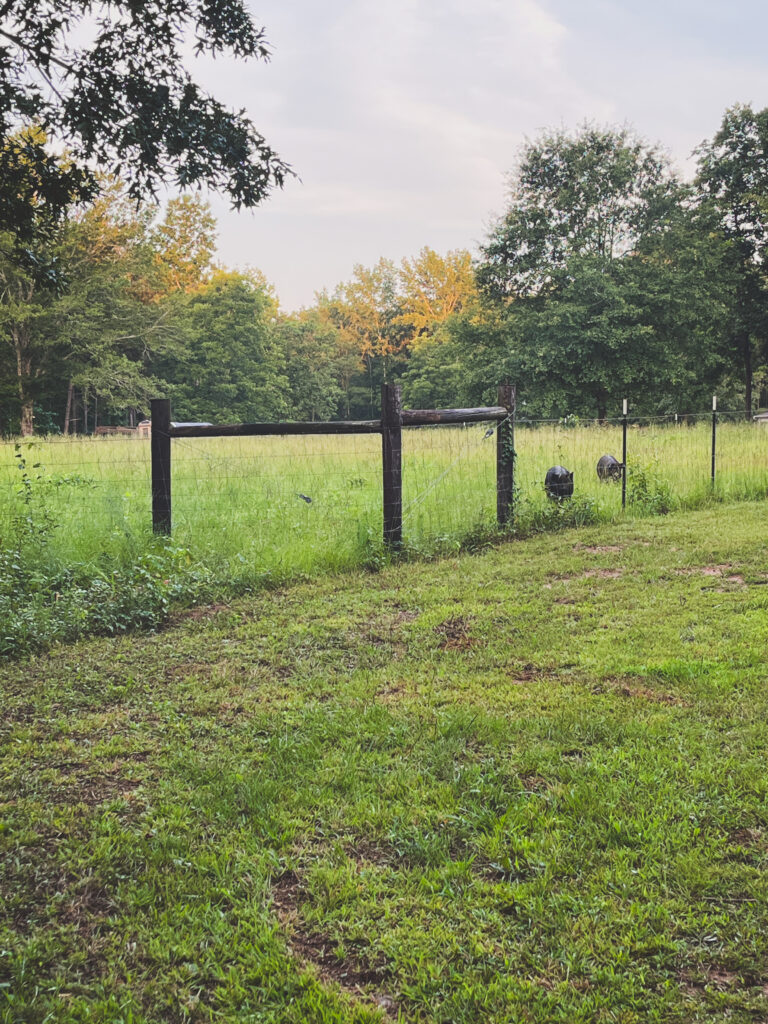
**This post may contain affiliate links which means I make a small commission at no extra cost to you. Read my full disclosure here.*
Are Pigs Hard To Fence In?
Pigs are great livestock to have on a small farm. They don’t require as much space as cows, while still providing a large amount of meat.
However, pigs tend to escape their permanent fence. If you’ve ever dealt with a stubborn hog, you know that pigs are going to do exactly what they want to do.
To keep a hog fenced in, you’ll have to understand a little of their behavior.
Pig Behavior
Pigs have snouts that are made to root up the ground to find grubs and other minerals. They are highly intelligent animals. Once a pig realizes it’s made an escape hole under a fence, it will use it the first opportunity it gets.
Even hog wire fencing can be easily bent by a large hog to escape a fenced area.
Hog panels usually work pretty well at keeping pigs in. However, if a large pig can root under the panels, it can use its strength to lift the panel and t-post out of the ground. A loose pig can terrorize the neighborhood.
Raising The Right Breed Of Pig For Your Farm
Some breeds don’t tolerate being confined. In my previous article, I discussed some characteristics of the more popular pig breeds.
If you have a limited amount of space, you need to research pig breeds that do well in confined spaces. For example, breeds such as Tamworth need plenty of space to roam around.
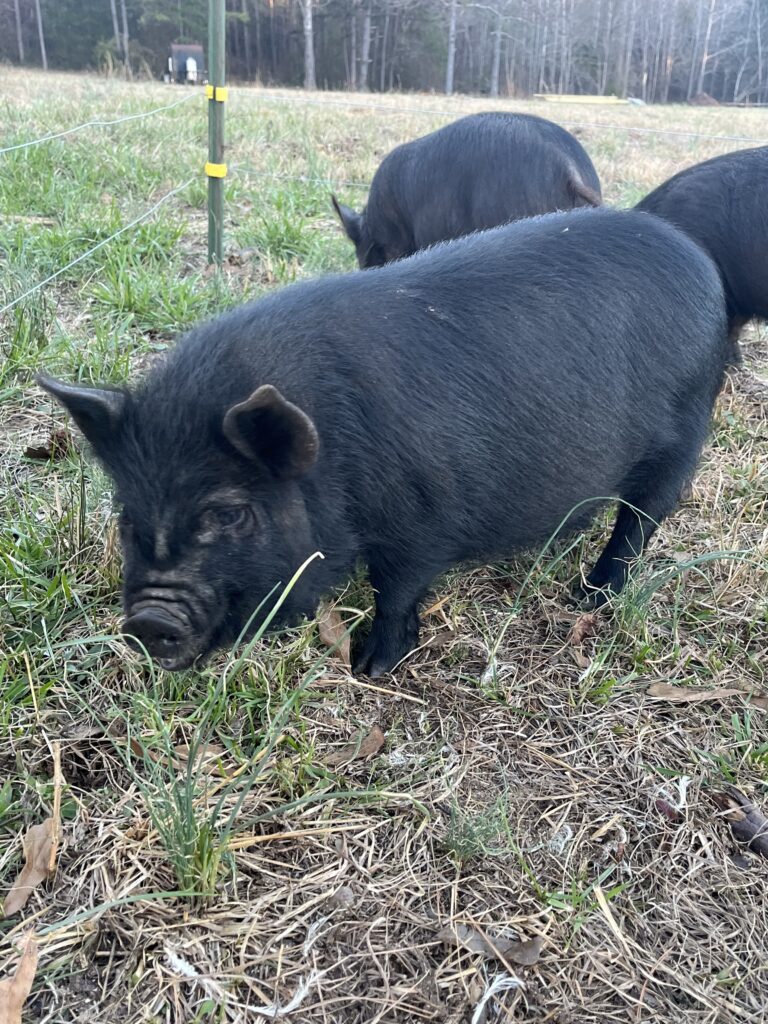
Electric Fencing For Pigs
I have found that electric fencing is the easiest, most effective way to contain pigs. Again, pigs are smart and will stay away from areas that cause them pain. It doesn’t take long for the pigs to learn their boundaries.
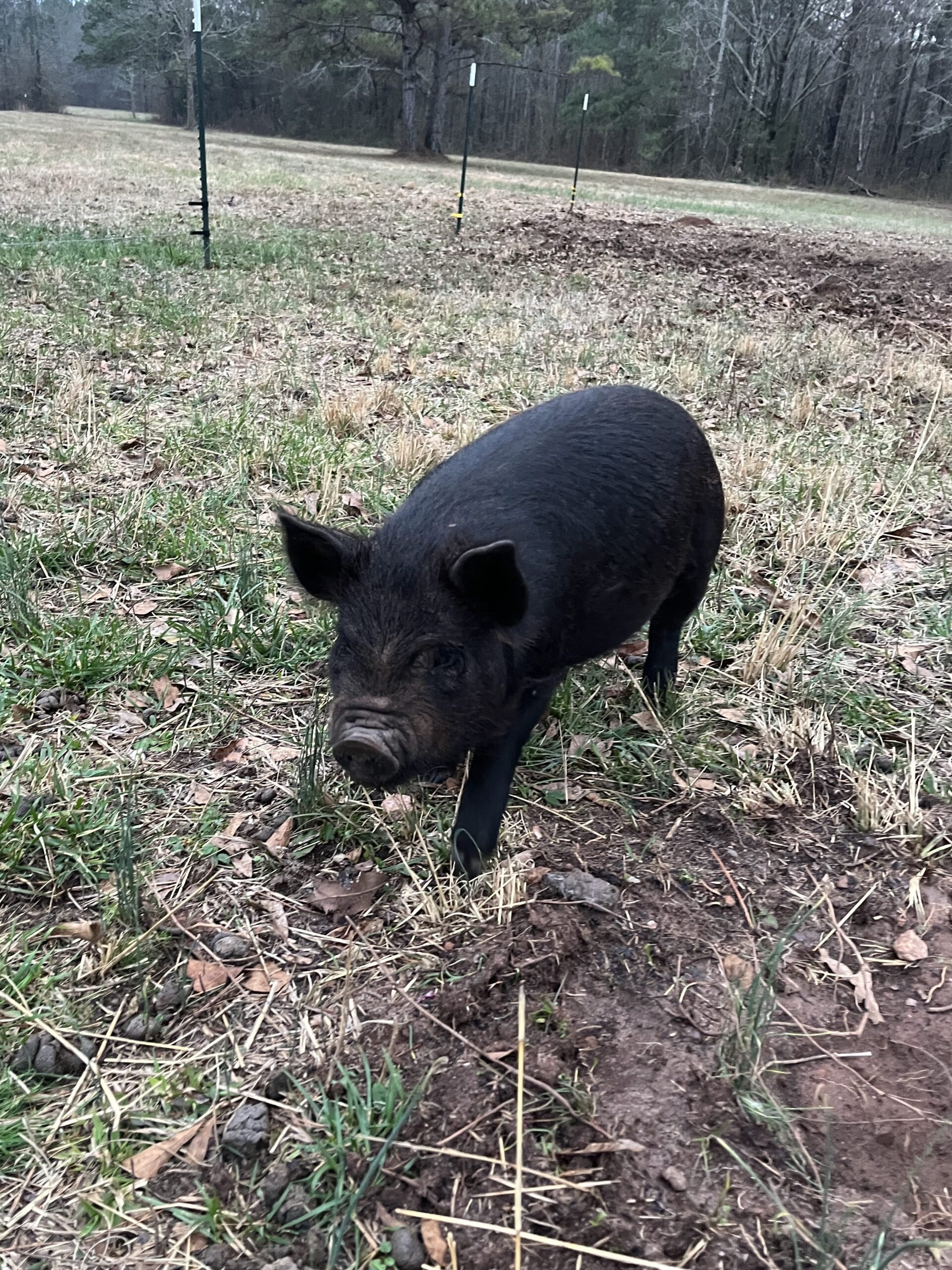
Electric Fence supplies
If you’re building an electric pig fence for your pigs you’ll need:
- 5’ T-posts- You’ll need to calculate how many you need according to 20’ spacing.
- 14g electric fencing wire. – enough for at least two rows of wire around the perimeter.
- Wire insulators– You’ll be running two strands of fence wires per post. Again you’ll need to calculate the number you need according to the size of the area you are fencing.
- Electric fence energizer
- T post driver
- T post remover
- Voltage Meter
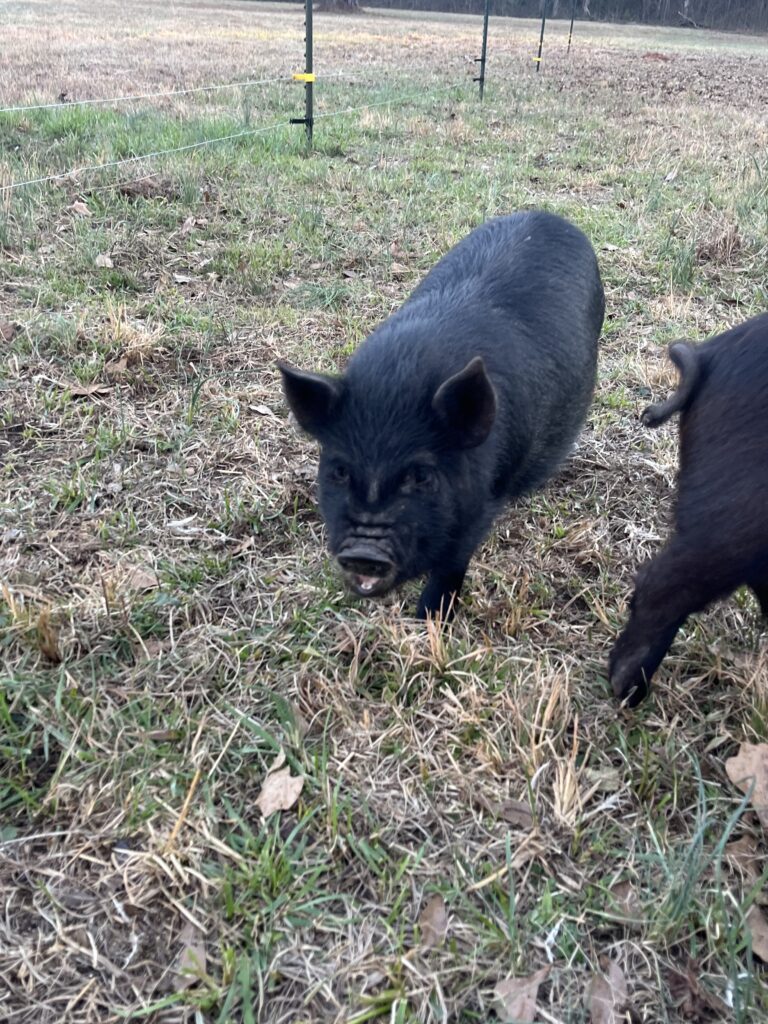
Steps For Installing Electric Fencing For Pigs.
Start by mapping out the area you want your pigs to be in. I suggest doing a perimeter fence for the best pig containment. You can later use a portable electric fence for rotational grazing if that’s your plan.
Line posts using your t-post driver. Set your t-post at least 12” deep and 20’ apart along your desired fence line.
For piglets, attach the insulators at 6 inches or snout height, and 18 inches above the ground. You will only need 2 strands of wire to contain piglets. Piglets don’t need a tall electric perimeter.
If you’re raising adult pigs you can raise the height of the bottom wire to 12 inches. A three-wire system is the best option for adult domestic pigs with a wire heights set at 12″, 18”, and 24” high off the ground.
You may need to adjust the height of the insulator according to the topography of your area. DO NOT let the wire to touch the ground or install it low enough that it can get buried by the pigs. You also don’t want any high gaps, which would allow the pigs to escape under the wire.
Run the wire taught around the perimeter of the enclosure. High tensile wire and wooden posts are also a good option for permanent fencing, but it isn’t the best choice because it’s not portable.
Attach the electric fence generator to the wire. Ensure that your wire is hot all the way around the line system.
Check for areas where the vegetation is overgrown. This will greatly decrease the voltage of the wire, and the pigs will be able to breach that area.
Frequently check the voltage of the fence using a voltage meter to ensure it stays hot.
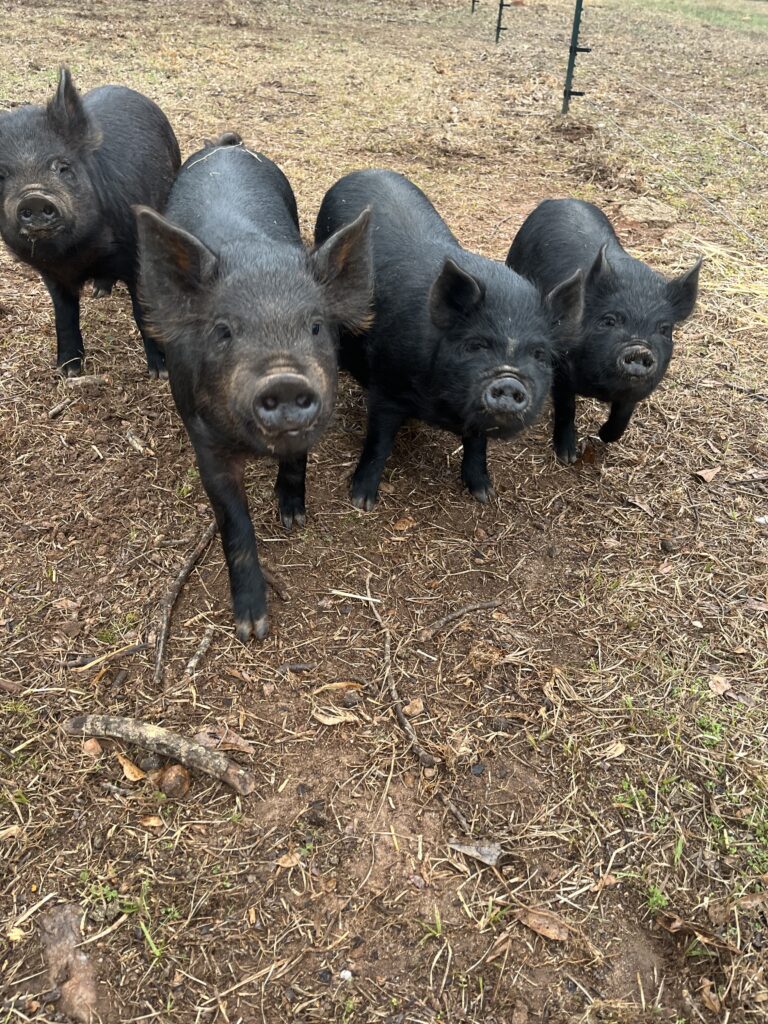
Introducing The Pigs To The Fence
Pigs need time to become acclimated to their surroundings. If you turn pigs loose in their new enclosure they’ll breach the fence immediately. The shock won’t phase them as they bust right through it. The way to effectively train pigs to stay in the electric perimeter is by letting them slowly explore the area.
First, close the pigs in a shelter within the fencing. We use our mobile livestock houses for this purpose, but you can use a different structure as long as it contains the pigs and provides them with sufficient space.
Keep the pigs closed in the housing for a few days. Be sure to supply them with plenty of water, food, and bedding. This becomes a safe home for the pigs.
When you are ready to let the pigs out, open their enclosure. They’ll slowly start to come out and explore the area around their house.
The 6” hot wire will be right at the snout level. As they begin to root around and explore, they’ll touch the wire with their snout and quickly learn that it hurts. The pig’s snout is very sensitive.
Letting the pigs slowly identify the perimeter will train them to stay contained in the area. Every now and then they’ll test it and you’ll hear a squeal from the electric shock, but they know their boundaries.
It’s also important to note that pigs are less likely to escape an area as long as they are getting what they want within it. Rotational grazing keeps them on fresh pasture with plenty to eat. Providing them with plenty of space ensures they are happy to stay where they are.
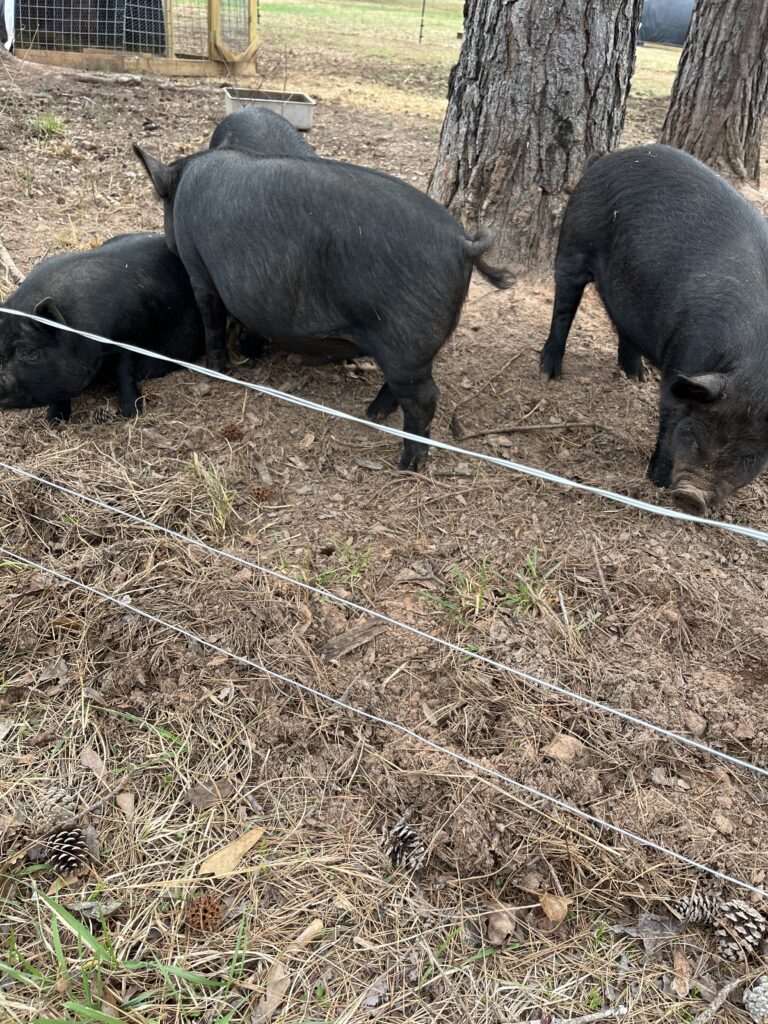
Tips on Fencing for Pigs
-Using a colored electric wire is also beneficial. The pigs can see their boundaries better and quickly learn that the wire is hot. Colored wire is also great for rotational grazing because when it is removed to move the pigs, they aren’t as scared of the area where the wire once was.
-A single strand of electric wire can be ran at the base of a hog wire fence to help train the pigs to avoid the fence. This method will also prevent the pigs from digging under the wire. However, keep a close eye on them. A determined pig can figure out a way around a single strand of wire.
Final Thoughts on The Best Electric Fencing for Pigs
Wrapping up, setting up electric fencing for your new pigs doesn’t have to be tricky. Just remember to choose a good fence that fits the type of pig and size of the pig you have. With the right setup, your pigs will be safe and happy, and you’ll have peace of mind knowing they’re secure.
If you enjoyed this article, please share it! Thank you for visiting my little farm.
[…] Easy and Best Electric Fencing For Pigs […]